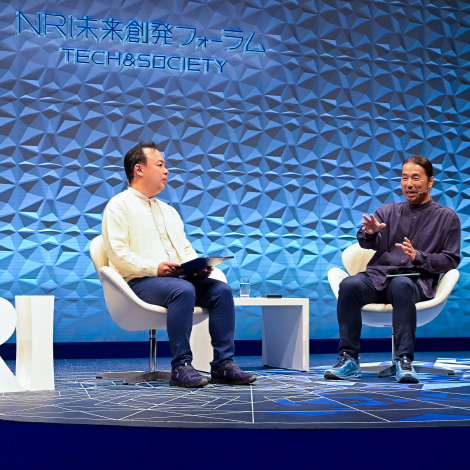Evolving Cloud Services and Changing Awareness of Companies
#Cloud
Oct. 10, 2019
A cloud provides computing services, data storage services, and application processing services over a network. Today, many companies are switching to cloud computing because they can use the system flexibly without having to build in-house physical servers and storage. We spoke to Takuro Sasaki of NRI Netcom, who has been long involved in the development of web-based systems, about the latest trends in cloud computing.
Cloud enables flexible server operations and machine learning
When did Japan start using cloud services?
It was around 2010. Initially, not many companies adopted it due to security concerns and other factors. However, awareness about cloud computing increased after the term "Cloud-first" was introduced, which promotes the use of cloud-based solutions before considering other alternatives. If I talk about the projects I am involved in, I often make proposals using a cloud environment rather than on-premises, where companies own and operate servers and other hardware.
Why has cloud usage increased?
This is because of the benefits and increased awareness of the cloud. In the case of online shops, for example, dealing with the peak and off-peak periods was a major challenge. If companies made provisions as per the peak demand, the resources utilized daily would be low and costs would be high. Conversely, if they made provisions tailored to day-to-day demand, they would be unable to cope with the peak demand, resulting in a decline in quality of service. The solution to this dilemma was the cloud, which can flexibly change its capacity to meet the demands of the peak as well as off-peak periods.
Big data and data analytics, which have been in the limelight recently, require large-capacity storage and multiple servers. Earlier, only a few companies were able to make such large investments; however, with the emergence of cloud technology, even students can use advanced analytics tools such as big data and machine learning affordably.
In the field of system operation as well, the time and effort required to respond to problems such as hardware failure have greatly reduced. Using such tools to automate, streamline, and reduce manpower from operations can help in coping with problems such as human resources shortages.
New activities such as multi-cloud
The number of cloud vendors is very limited as it involves a huge amount of investment in large-scale infrastructure.
The three major vendors are Amazon, Microsoft, and Google. According to the ranking of cloud vendors published annually by the U.S. research firm Gartner, these three companies are expanding their services year by year and widening the gap with other competitors in the market.
Are there any cases where cloud services of multiple vendors are used in combination?
Yes, it is called a multi-cloud. While Amazon and Microsoft have a strong corporate system, Google is good at analyzing all kinds of data, including websites. Thus, different vendors have different areas of expertise. In recent years, there has been a growing need to cross-analyze how people interact in the real world and on the web. As a result, there is a growing trend of using a combination of Amazon’s core cloud and Google cloud for data analytics.
Cloud is not an alternative to on-premises architecture
What advice do you have for companies that want to leverage the cloud?
Many companies want to adopt the cloud because they think it is cheaper, but the cost of on-premises hardware is not as expensive as it used to be. Certainly, from the hardware perspective, companies may tend to think that the cloud is not fetching them any cost benefits, but in that case also, it is important to consider not only hardware, but also other costs including data center renting fee, electricity charges, and labor costs.
Leading companies are embracing the cloud for advanced analytics and services that are not possible on-premises. It is important to understand that not only the cost but also the usage levels are changing.
Moreover, cloud adoption should be supported at the organizational level, rather than having each department work separately. In particular, as multiple departments are often involved in acquiring the necessary data, the organization as a whole needs to consider questions such as who manages the data collectively.
How would you like to promote and support cloud utilization in the future?
The full-scale adoption of cloud is expected to grow in the future. The NRI Group intends to make the most of its collective strengths to support clients’ use of the cloud. For this, NRI, NRI Digital, and NRI Netcom will work together, consolidating their respective expertise of business consulting, data utilization, and implementation, to support clients as business partners.








